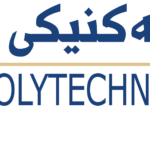- Tayib Kazho Ali
- engineertayib@yahoo.com
- +9647504451339
- tayib_research
-
ABSTRACT
Current study aims to examine the role of knowledge management
processes in enhancing excellence manufacturing performance in the recycling
sector of Kurdistan Region of Iraq. Depending on quantitative approach ,100
questionnaires were distributed among administrative leaders of 50 factories in
recycling industry sector , by using SPSS program and a binary logistic
regression model. Results of the study indicate a positive influence of
knowledge management processes on operational excellence. Results also
reveal that Organizations will be able to optimize their operations and improve
productivity if they can leverage and apply the cumulative knowledge of their
employees. Consequently, the overall model is statistically is significant,as
Indicated by a -2 Log likelihood of 38.66 anda Chi-square value of
10.724(p=0.02),with a Nagelkerke R2 of 0.48,meaning that knowledge
management processes in the model explain 48% of the variance in
manufacturing performance . Indeed, this study identified that employee-to
employee knowledge-sharing and collaboration develop a sort of synergy,
which exaggerates the benefits of Knowledge Management initiatives. From
these insights, this study develops actionable recommendations for
practitioners on investment priorities in Knowledge Management systems and
in engaging leadership in Knowledge Management processes. An environment
of shared knowledge and continuous learning is very liable to provide
sustainable performances through improvements. Aligning Knowledge
Management initiatives with broader organizational goals and environmental
sustainability objectives can further enhance the impact of these practices.
Ultimately, this research offers a roadmap for capitalizing on Knowledge
Management as a strategic asset in the pursuit of operational efficiency and
sustainability within the recycling sector.
Key words: Knowledge management, Manufacturing performance, Binary
Logistic Regression, Kurdistan Region. Recycling sector - Erbil Technical Administrative College
- technical administrative
- business management
- Zhwan khorhsed faysal
- Zhwan2025@outlook.com
- +9647504662413
- Final Thesis Zhwan 8-1-2025 after lingustic review.docx
-
This study examines the relationship between the creative climate,
employee engagement, and creativity within the Ministry of Trade and Industry
in the Kurdistan Region of Iraq. A quantitative approach was employed, using
a descriptive-analytical method to assess the dimensions of the creative climate
and analyze their correlation and impact on engagement and creativity. Data
were collected from 295 employees using a structured questionnaire, and a
simple random sampling technique was applied to ensure unbiased
representation. Statistical analyses were conducted using SPSS (Version 22).
The findings indicate a strong positive relationship between the creative climate
and employee engagement and creativity, except for the "Conflict" dimension,
which showed no significant correlation. The study also demonstrates a
substantial impact of the creative climate on both employee engagement and
creativity.
To enhance these outcomes, the study recommends implementing
targeted training programs to develop leadership skills, fostering open
communication channels to build trust and transparency, and promoting
workplace diversity to encourage innovation. Additionally, it highlights the
importance of creating supportive work environments that facilitate
collaboration, provide psychological well-being, and encourage innovative
practices. Finally, the study emphasizes the role of positive leadership from
senior management and high-performing employees in fostering a culture of
creativity and engagement.
This study contributes to understanding how creative climate dimensions
influence employee engagement and creativity in public sector organizations,
offering evidence-based recommendations for enhancing organizational
performance.
Keywords: Creative Climate, Employee Engagement, Creativity, Workplace
Diversity, Organizational Innovation, Kurdistan Region of Iraq. - Erbil Technical Administrative College
- technical adminstration
- business management
- Salar Ismael Ahmed
- salar.ahmed@epu.edu.iq
- +9647504685776
- Salar Ismael Ahmed PhD Dissertation
-
ABSTRACT
The fifth generation (5G) mobile communication technology intends to address the massively increasing data rate requirements as well as the massive growth in traffic volume. The 5G technologies achieve higher performance, reduced latency, higher density, and higher mobility minus of sacrificing reliability. However, as the mobile core networks are facing exponential growth in traffic and computing demand as smart devices and mobile applications become more popular. One of the most promising solutions to the challenges is caching. Non-Orthogonal Multiple Access (NOMA) is one of the promising radio access techniques for performance enhancement in next-generation cellular communications. Especially the 5G networks are expected to provide a massively increased number of users at a thousand times higher data rates at lower power consumption because NOMA provides a higher spectral efficiency and higher system throughput. For more improvement, power domain (PD-NOMA), code domain (CD-NOMA) and cooperative (C- NOMA) techniques are proposed and implemented in the 5G to overcome the future network demands. The PD-NOMA, employs Successive Interference Cancellation (SIC) at the receiver and Superposition Coding (SC) at the transmitter.
The proposed systems implemented with the help of MATLAB and NYUSIM simulations. The results of simulation show that the proposed techniques meet the various needs of improved user fairness, quality-of-service (QoS), high reliability, high spectral efficiency, extensive connectivity, raising data rates, high flexibility, low transmission latency, massive connectivity, low delay, higher cell-edge throughput, and superior performance.
For more improvement, caching techniques, as a storing popular reusable information at intermediate nodes to reduce backhauling load in wireless
ii
networks, have been integrated with C-NOMA to reduce the delay of storing planned content needs, relieve backhaul traffic and to alleviate the delay caused by handovers. The results of simulation of caching integrated with C-NOMA technique have shown promise in maximizing throughput, minimizing latency, and optimizing resource efficiency. In C-NOMA, dynamic resource allocation refers to the process of dynamically modifying the power required to transmit rates and resource blocks allocated to users under their QoS requirements and channel conditions.
Finally, a novel approach is proposed by integrating C-NOMA, massive multiple-input multiple-output (m-MIMO) with caching as a strategic technique to overcome the exponential growth in data demand, spectrum scarcity, mitigation of interference, energy efficiency and sustainability. The simulation and evaluation results proved that the proposed system provides significantly a higher performance in terms of data rate, bit error rate (BER), and outage probability and reduces the power consumption to 52.6% and 54.7% compared to NOMA without cooperative and without NOMA, respectively, which is higher than the related works. The results of simulation verify the achievement of low-latency required by the sixth generation (6G) mobile communication networks cause to operate bandwidth-intensive applications such as high-definition video streaming, augmented reality, virtual reality, and Internet of Things (IoT) devices. - Erbil Technical Engineering College
- Information Systems Engineering
- electronics and Communication (5G and 6G)
- Shna Jabar Abdulkarim
- shna.jabar@uor.edu.krd
- +9647501385665
- PhD.Shna Jabar Abdulkarim
-
In this dissertation, three nonlinear techniques of prestressing, analysis, and preservation were developed based on the principles of the force method to address geometric nonlinearities in pin-jointed spatial structures. These techniques provide a comprehensive framework for accurately performing prestressing, analysing, and preserving spatial assemblies, validated through rigorous numerical and experimental investigations.
The research introduces direct nonlinear approaches especially for prestressing and preservation, overcoming the limitations of iterative and linear approximation-based methods. The derived nonlinear equations, expressed as functions of joint displacements, were efficiently solved using MATLAB’s fsolve function, demonstrating robust applicability to both simple and complex spatial systems. The proposed prestressing technique computes the desired prestress level by accurately accounting for nonlinear member alterations, preventing cable slack, and maintaining alignment with software solvers under predetermined actuation conditions.
The developed analysis method is efficient and precise, capable of calculating internal member stresses and axial forces for both rigid and flexible members while incorporating geometric nonlinearities under different loading conditions. Similarly, the preservation technique reliably restores disturbed geometries, nodal displacements, and internal forces, with targeted control of specific parameters. The effectiveness of the preservation process depends on actuator placement, bar sensitivity analysis, and the appropriate selection of actuation targets.
Validation of these techniques included numerical case studies and experimental testing on a hyperbolic paraboloid space cable net model with 64 members and 41 joints. The results demonstrated strong agreement, with maximum and minimum discrepancy ratios of 7% and 0%, respectively, between theoretical and experimental measurements. This dissertation presents a novel framework that significantly enhances the precision, efficiency, and control of structural response prediction, making substantial advancements in the field of pin-jointed spatial structures.
- Erbil Technical Engineering College
- Civil Engineering
- Structural Engineering



